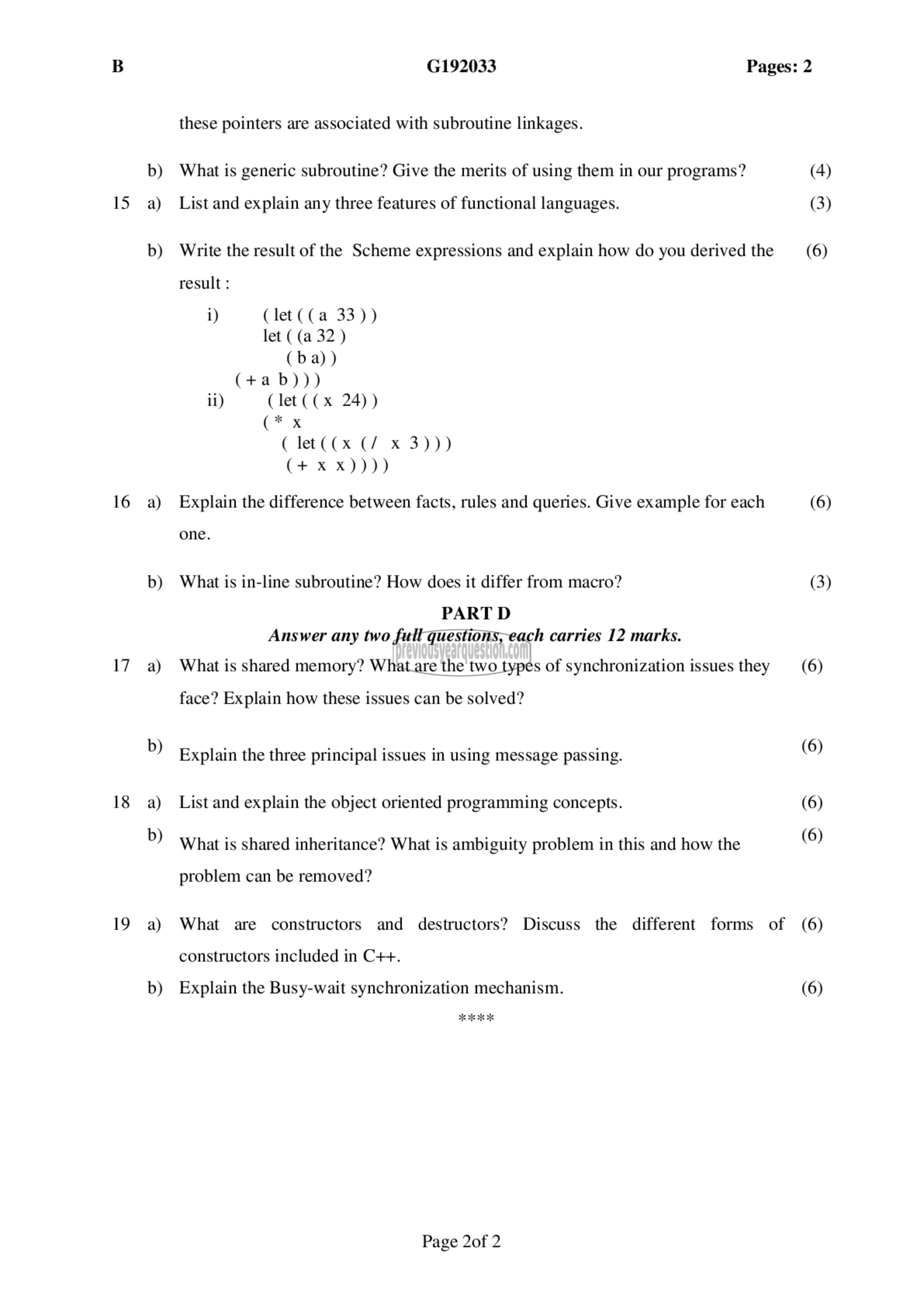APJ ABDUL KALAM TECHNOLOGICAL UNIVERSITY Previous Years Question Paper & Answer
Semester : SEMESTER 7
Subject : Programming Paradigms
Year : 2019
Term : DECEMBER
Branch : COMPUTER SCIENCE AND ENGINEERING
Scheme : 2015 Full Time
Course Code : CS 403
Page:2
B
b)
15 a)
b)
16 a)
b)
17 a)
b)
18 a)
b)
19 a)
b)
G192033 Pages: 2
these pointers are associated with subroutine linkages.
What is generic subroutine? Give the merits of using them in our programs? (4)
List and explain any three features of functional languages. (3)
Write the result of the Scheme expressions and explain how do you derived the (6)
result :
i) (let ((a 33) )
let ( (a 32 )
(ba))
(+a b)))
ii) (let (( x 24) )
(* x
( let((x (/ x 3)))
(+ x x))))
Explain the difference between facts, rules and queries. Give example for each (6)
one.
What is in-line subroutine? How does it differ from macro? (3)
PARTD
Answer any two full questions, each carries 12 marks.
What is shared memory? What are the two types of synchronization issues they (6)
face? Explain how these issues can be solved?
Explain the three principal issues in using message passing. (6)
List and explain the object oriented programming concepts. (6)
(6)
What is shared inheritance? What is ambiguity problem in this and how the
problem can be removed?
What are constructors and destructors? Discuss the different forms of (6)
constructors included in C++.
Explain the Busy-wait synchronization mechanism. (6)
Page 2of 2
